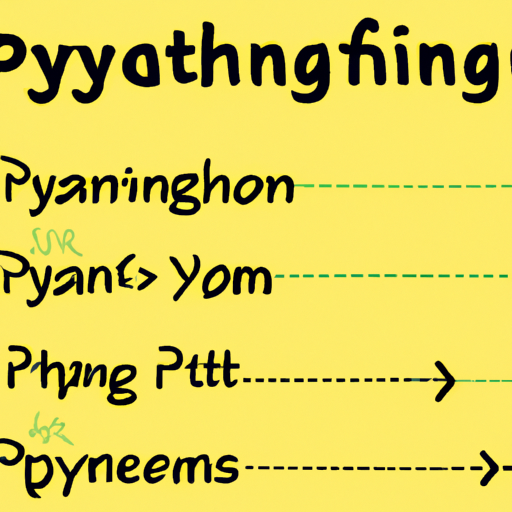What is the Format Method in Python: A Complete Guide
The format method in Python is a powerful string manipulation tool that allows you to format and display variables within a string. It provides a concise and efficient way to combine text and variable values, making it easier to create dynamic and customizable output.
The format method is available for all string objects in Python and follows a specific syntax. To use the format method, you start with a string containing placeholders, which are represented by curly braces {}. Inside the curly braces, you can specify the position or name of the variable you want to insert into the string.
Let’s take a look at a simple example to understand how the format method works:
“`python
name = “John”
age = 25
print(“My name is {} and I am {} years old.”.format(name, age))
“`
In this example, the format method is used to insert the values of the `name` and `age` variables into the string. The curly braces {} act as placeholders, and the variables are passed as arguments to the format method. The output will be:
“`
My name is John and I am 25 years old.
“`
The format method also allows you to specify the format of the inserted values. For example, you can control the number of decimal places for floating-point numbers, specify the width of the field, or add leading zeros to integers. Here’s an example:
“`python
pi = 3.14159
print(“The value of pi is approximately {:.2f}”.format(pi))
“`
In this case, the format method is used to format the `pi` variable as a floating-point number with two decimal places. The output will be:
“`
The value of pi is approximately 3.14
“`
You can also use the format method with named placeholders, which can make your code more readable and maintainable, especially when dealing with a large number of variables. Here’s an example:
“`python
name = “Jane”
age = 30
print(“My name is {name} and I am {age} years old.”.format(name=name, age=age))
“`
In this example, the placeholders in the string are named `{name}` and `{age}`, and the variables are passed as keyword arguments to the format method. The output will be the same as before:
“`
My name is Jane and I am 30 years old.
“`
In addition to using the format method with variables, you can also use it with literal values or expressions. This allows you to create complex strings by combining static text and dynamic values. Here’s an example:
“`python
print(“The sum of 2 and 3 is {}”.format(2 + 3))
“`
In this example, the format method is used to insert the result of the expression `2 + 3` into the string. The output will be:
“`
The sum of 2 and 3 is 5
“`
The format method in Python provides a flexible and efficient way to format strings with variables. It allows you to create dynamic output by combining text and variable values, making your code more readable and maintainable. By understanding and utilizing the format method, you can enhance your Python programming skills and create more powerful applications.
Remember to always refer to the official Python documentation for more detailed information and examples on how to use the format method effectively.




